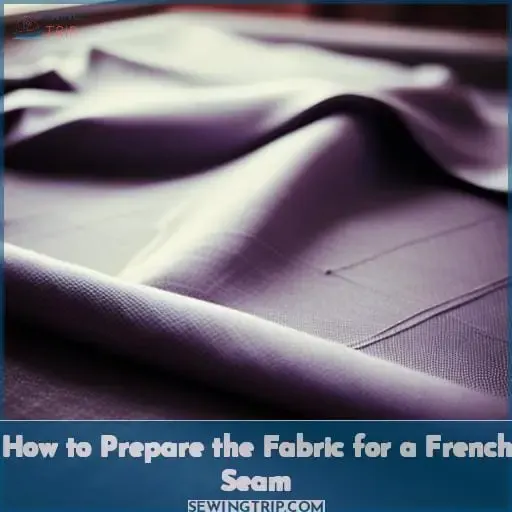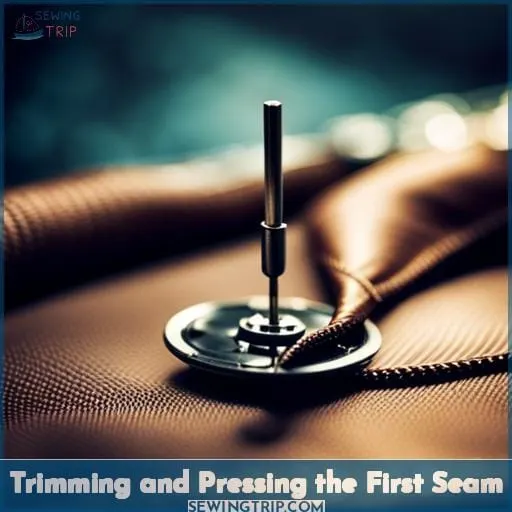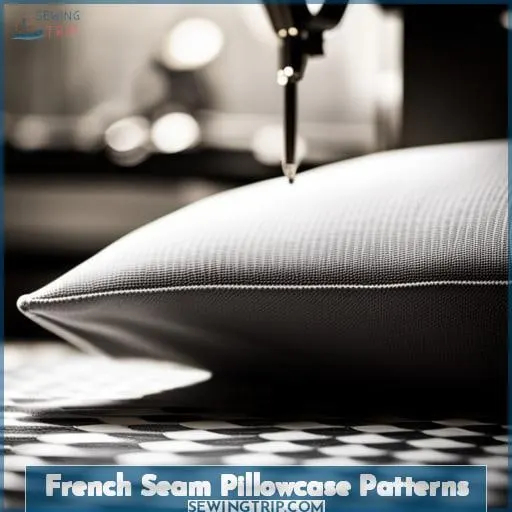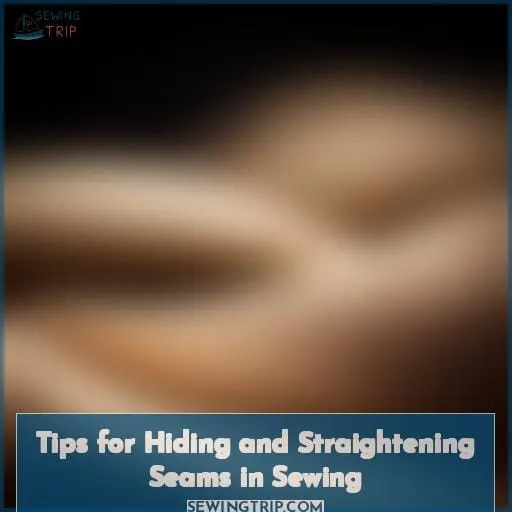This site is supported by our readers. We may earn a commission, at no cost to you, if you purchase through links.
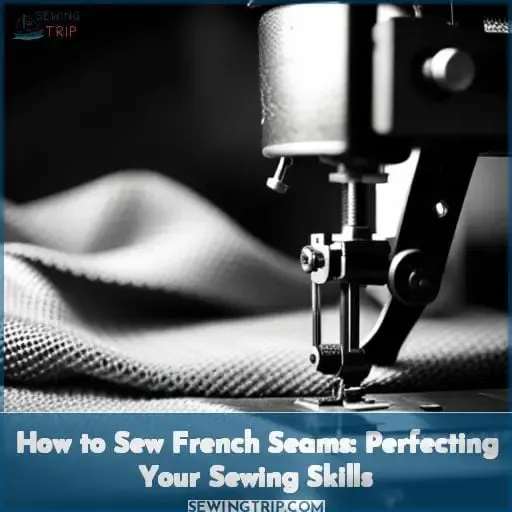 Believe it or not, you can take your sewing skills to the next level with something as simple as a French seam. But don’t be fooled – mastering this technique takes patience and precision! A French seam is a great way to hide raw edges when working with sheer or lightweight fabrics, creating an elegant finish that’s perfect for any project.
Believe it or not, you can take your sewing skills to the next level with something as simple as a French seam. But don’t be fooled – mastering this technique takes patience and precision! A French seam is a great way to hide raw edges when working with sheer or lightweight fabrics, creating an elegant finish that’s perfect for any project.
Table Of Contents
Key Takeaways
- Elevates sewing skills for elegant finishes
- Ideal for sheer or lightweight fabrics
- Suitable for blouses, dresses, and delicate garments
- Requires finesse for curving seams
What is a French Seam and When to Use It?
You’ll want to learn this seam for sheer fabrics that need a clean, enclosed finish. The French seam beautifully encases raw edges between two rows of stitching. It provides a neat finish ideal for blouses, dresses, even unlined jackets in delicate fabrics like chiffon, silk, and lightweight linens.
Matching thread color to fabric prevents visible stitching. Adjust presser foot pressure and stitch length for slippery fabrics. Practice on scrap pieces first to find proper sewer settings based on fabric density.
Curving seams takes added finesse. But with a bit of technique, the encased French seam creates invisible, durable seams perfect for flowy garments needing delicate handling.
How to Prepare the Fabric for a French Seam
Before starting a French seam, determine the initial seam allowance width based on your fabric—usually 3/8 inch. Next, pin the wrong sides of the fabric together and sew the pieces with that initial seam allowance to create the first seam.
Determining Seam Allowance
Use a 3/8-inch seam allowance for the first seam to remain invisible on delicate fabrics.
- Measure and mark a 3/8-inch seam guide on your sewing machine.
- Align the fabric edge precisely along the seam guide as you sew.
- Check the width of the seam with a ruler for accuracy.
Pinning and Sewing the First Seam
Match up your fabric pieces with wrong sides facing and secure with pins before stitching the first 3/8 seam. Position straight pins perpendicular to the raw edges every 3-4 inches, aligning the fabric precisely for smooth sewing.
Use fine silk pins for lightweight or delicate fabrics. Stitch the first seam using a straight stitch and 3/8 seam allowance. Check alignment as you sew, adjusting pins if needed. Remove pins as you progress.
Trimming and Pressing the First Seam
Trimming and pressing the first seam.
Encased the trimmed seam allowance inside the pressed crease. After sewing the initial 3/8-inch seam, carefully trimmed the seam allowance down to 1/8 inch. This reduces bulk for a sleek finish. Gently pressed the trimmed seam flat using the tip of your iron while avoiding distortion.
Folded the fabric pieces with right sides together, aligning the trimmed seam inside. Applied pressure with the iron to set a defined crease along the folded edge. Maintaining this crisp fold is crucial when sewing the second encasing 1/4-inch seam.
Took care not to shift or stretch the fabric. Allowing the fabric to cool before moving ahead will help preserve the shape. With the trimmed seam neatly tucked inside the crease, you’re ready to sew the final French seam for a clean, professional finish.
French Seams for Curved Edges
For curved edges, clip the seam allowance before folding to help the seam lie flat when flipped. When French seaming delicate fabrics like chiffon, clip inward-facing concave curves in the first seam to reduce bulk.
Make small, frequent clips just shy of the stitching line. This allows the seam allowance to spread open when pressed flat. On convex curves, clip outward toward the raw edge so the seam folds smoothly when flipped right-side out.
Clipping prevents puckering and maintains the intended shape. Test different clip depths and spacing on scraps first to perfect your technique. With practice, French seams enable you to achieve a clean, professional finish on any silhouette, even fluid designs with contoured edges.
French Seam Pillowcase Patterns
Didn’t you wonder if there’s a simpler pattern for French seaming pillowcases? When making pillowcases, a French seam gives a clean, professional finish.
- Choose thin to medium weight fabrics like cotton, linen or silk. Avoid heavy fabrics.
- Take care with stitch precision on curved edges. Go slowly.
- For decorative edges, finish first before seaming.
- Press seams after each step.
- Hem pillowcases with a double needle for durability.
The order of operations is key: finish embellishments first, then French seam, and finally hem. With practice, you’ll have beautiful French seamed pillowcases to impress and delight.
Tips for Hiding and Straightening Seams in Sewing
Press seams open or to one side before topstitching. Use a pressing cloth if needed.
Trim seam allowances to 1/8 or less so stitches don’t show through lightweight fabrics.
Pin seams at regular intervals to prevent them from shifting as you sew.
Use a narrow zigzag stitch or tiny straight stitch length to hide machine stitches.
Hand-baste first or use a walking foot for even fabric feeding when topstitching.
Conclusion
The French seam is an essential skill for any sewer, whether you’re a beginner or an expert. With this technique, you can create a neat, finished look in sheer fabrics, such as for blouses, jackets, and even pillowcases.
Once you’ve mastered the steps of pinning, trimming, pressing, and folding the fabric, you’ll be able to sew French seams with ease. All it takes is a bit of practice and the right tools, and you’ll be able to perfect this skill in no time.
With the help of this article, you’ll be able to master how to French seam in sewing in no time and create stunning pieces that will last for years to come.


